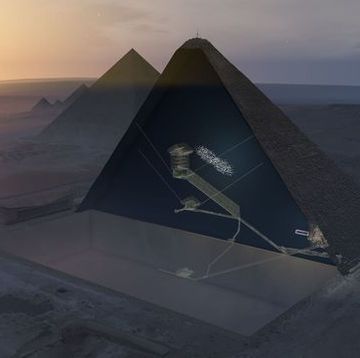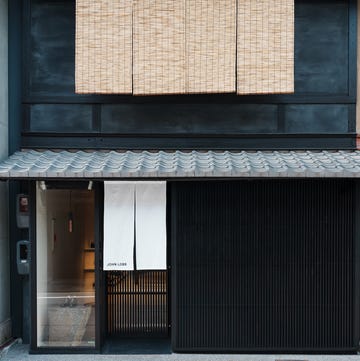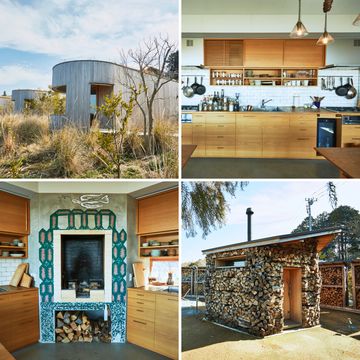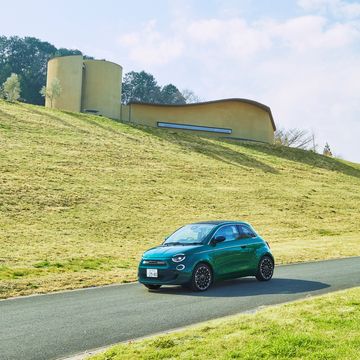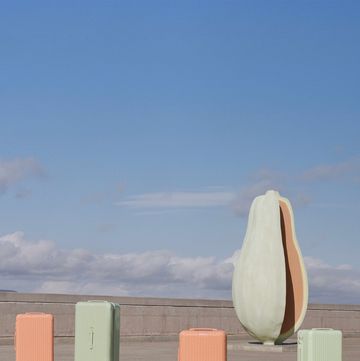Carl Stone has produced electronic music in Tokyo since the early 80s and is an inheritor from other sonic greats, from Terry Riley to Toru Takemitsu.
In the last few years Carl has been more prolific than ever. His latest album, Wat Dong Moon Lek, (produced during Japan’s latest lockdown) is perhaps a perfect soundtrack to that particular moment in time. The album plays like a gamelan of leviathan proportions, drawing from the myriad East Asian instruments and modern pop music constructs in its arsenal, with deft synchronicity. The resulting sound is familiar, and yet unlike anything else you can recall. It is possessed of an energy that is both joyful and trance-like, delivering pleasantly unexpected humor all along the way.
I sat down with the native Californian at an old showa-era café, La Fontaine, across the street from Shinsen Station to discuss his life in Japan, his latest album and the disappearing sounds of Tokyo.
Berry: It’s great to be sitting here with you in this café in Shinsen Station. I wanted to touch on the main changes you’ve seen in Tokyo. I think we’ve discussed it earlier on our walk, like how I guess the psychogeography has changed and how that’s had an impact on you and your output.
Stone:
Well, Tokyo is an extremely dynamic city, and I think just in terms of the landscape and planning, it’s always been changing since the very first time [I traveled here]. The very first time, I stayed in Shinjuku, kind of on the west side and looking out of the window of the hotel you’d see fields, empty fields. What is now the city Hall and Tochou, that whole development in Nishi-Shinjuku wasn’t there at all. It was just zero.
And since that time, probably every place I’ve been to has been under more or less continuous development, re-development, and re-re-development… very few places are totally untouched, but some places are somewhat less under the pressures of development than others. Where we sit today is one of those. For some reason, I’m not really sure why, this little corner of Shibuya, which is one of the most intense and has been the subject of much infusion of funds to create artificially a kind of business model: a Silicon Valley-esque shared workspace paradise. And the Olympics was a big driver.
But really, the lens I look at Tokyo through is as much audible as visible. I’ve been an informal student of how the sounds have changed. Tokyo is the noisiest city in the world. Of course, there are a lot of noisy cities in the world where if you measured the noise level, it would be a lot noisier than Tokyo. I’m not saying that.
It’s a city with the most purposefully introduced sounds whether they be announcements or beeps and signals or sound logos that stores have that they blast out onto the street. And these things are dynamic too, when I first came here, one of the big electrical stores was Sakura Denki. They had a song that everybody knew at the time and blasted it out the windows.
Berry: I’ve heard it on YouTube actually!
Stone:
Right? And now it’s gone, that’s about the only place you can probably hear it now, on YouTube or maybe from some audio archivist. And there are audio archives for Tokyo.
And I have some of mine, [though] it’s not fully catalogued. You know, when I first came with my digital recorder back in 1988, I recorded a lot of sounds, many of which are gone now.
One of the things I work on with my students is what I call sound hunting. Any sounds are ok, but I like to point them to urban sounds. Students often think that the sounds that are introduced by humanity have a staying power that natural sounds might not, but the opposite is true. There’s an ephemeral quality to them. The sounds especially around hubs, especially train stations and the like, change all the time.
Pachinko is kind of a sound spot that a lot of people gravitate towards when documenting sounds in Tokyo and a pachinko parlor from 1988 is completely different sounding from one today.
Berry: Oh really?
Stone:
Completely. Sure.
Berry: So even the obvious things [that we might assume] “oh that’s gotta be the same, a pachinko ball is a pachinko ball, a train is a train”, it’s not necessarily part of our cultural soundscape inheritance?
Stone:
No. But those things like the pachinko balls in the parlor or the train in the station—that’s just a small percentage of the things that are going on sonically. I actually never played much pachinko. *jokingly* —‘lost everything I had and figured I was no good!’
I used to go there from time to time just to record. And for one thing they played this music, as if the environment not loud enough already, BGM at high volume just to keep the players stoked up and feeding the machines. Twenty-five years ago the BGM they played was all John Philip Sousa. like Stars and Stripes Forever. Now it’s all hard techno.
Berry: Sousa. That’s incredible!
Stone:
You could see early Pachinko machines in the Edo Museum, and they’ve been in a constant evolution. And very few of them have metal balls now, they have sensors and digital readouts. And they ‘beep’ and ‘boop’ and have all sorts of electronically produced sounds. Anime characters and their voices appear with great regularity. These are the hooks they use to keep people addicted, so it’s very different now. Somehow, I like John Philp Souza more than what I hear in passing when I walk by them today.
Berry: From the beginning of your career in California you could hear a more what you might call an academic sound, more minimal. But over time you can hear an evolution and you have definitely managed to move with the times but still keep that kernel of academic clarity. Now that we’re in the Covid era it seems you’ve been more prolific in the last 3 years than you ever were before. Is it all the extra time being cooped up in lockdown?
Stone:
That’s part of it. Stolen Car, my previous release, was done during lockdown and it was a great opportunity for me to just roll up my sleeves and do a lot of music. So that was part of it.
Also, another part is just the tools now. The software tools that I use have become optimized to my particular musical approach- with sampling and appropriation and so on. And so it’s become less of an effort in a way. I’m not manufacturing music but I’m able to be more productive and more free. I’m digging it.
I’ve also been encouraged by the positive response to my archival releases of my early work [which came out] in 2016 and 2018. That got a lot of positive attention which I was grateful for, and also it encouraged me to produce new work so that people could not only know what I was doing back in the 70’s and 80’s, could also know what I’m doing in 2022.
Berry: Could you expound upon some contemporaries or other artists you’ve enjoyed through the years? Both from the 70 and 80’s and today?
Stone:
The composers who influenced me the most when I was sort of at peak receptivity in the 70’s were artists like Steve Reich, Philip Glass, Terry Riley, Classical Minimalists. The hardcore minimalist works of Philp Glass, for example, his Studies for Keyboard, Music in Contrary Motion, Music in Parallel Motion, Einstein on the Beach, I consider his masterpieces. That was very impressive work for me. My teacher, Morton Subotnick, was another one. Éliane Radigue, who came through, no one knew about her at the time. Few people knew her work at all at that time, outside of a small cadre in France really then at Mills College in California where she did a residency.
Berry: I actually studied Japanese there for a summer.
Stone:
I didn’t know that. Yeah, so Mills Was a nice environment.
If I had to cite one of the single most influential things to my aesthetic, the thing that I would say in Japanese you know, kandou shita (感動した- lit. ‘It moved me’), I would say Alvin Lucier’s piece called ‘I Am Sitting in a Room,’ which attracted me on so many different levels. First of all, it’s a piece of classic minimalism where the form and the content are bound to each other, and where the process is explained in doing the course of the piece so that the listener understands from the beginning what is going on.
It’s not concealed or mysterious or obscured in the way of modernist music, the music of Boulez and Milton, Babbitt and so on—where clarity of process was almost forbidden. But in these minimalist works, it was all there out in the open and had tremendous appeal to me. Those were the works that really got me off the ground.
And then before that, I’m a child of the 60s, from California, so I was musically conscious during the Summer of Love. I saw Jimi Hendrix perform live several times. I saw Jefferson Airplane, Big Brother, Janis Joplin, you know all those bands, and they still impacted on me, too.
Berry: Were the Temptations still around?
Stone:
Oh, they were definitely around.
Berry: I love the track, Shibucho (1984) where you take their music – I don’t know how to describe it quite sonically- but where it sounds like you degrade and invert the sound waves of their music and it builds up in reverse…sort of.
Stone:
Yeah, well somehow I had a three record set of Motown’s greatest hits. And at the time I just had a turntable and a stereo digital delay and this was roughly around the same time that hip-hop was starting. But I had my head in university in California. Grandmaster Flash? I had never heard of him. We were both fooling around with turntables, too, and Grandmaster Flash certainly had never heard of me, either.
Berry: He is a Grandmaster, I guess!
Stone:
That’s right, and I’m just a first year chess player! Some of the artists that I have sampled, I can’t say that I even know their work so much. I just come across a tune randomly, maybe in somebody’s Spotify playlist, maybe walking down the street or coming out of a store or in a café as BGM. I’ll hear a phrase or something and think that what they did harmonically or the sound image is kinda interesting.
And so, I’ll figure out what it is by taking it apart. That’s what I’m doing with my music today. Taking something apart and putting it back together in a new way, so that in addition to whatever insight you get about what I do, you might get some more insight into the original music being sampled.
Berry: I was going to say, the earlier works are great and the tracks from Mom’s and Woo Lae Oak are beautiful and have that lovely minimal quality, and today your work has something very approachable and not so academic perhaps. I’m not a huge top 100’s listener, but it feels like you’re taking apart these tropes of modern day pop music.
Stone:
Yeah, I think that’s fundamentally true, I take the sonic profile of these pop pieces and to a certain extent the rhythms and driving force of these pop pieces, taking that and using that as a context. But at the same time applying somewhat more rigorous and formal approaches, which come from my background as a composer.
I would never consider myself an academic composer. I did study and I do believe in form as a very important component in music, certainly. And I do think that form, and attention to form are missing from even a lot of experimental work I hear these days. I’m not saying that has no value, but I’m saying that more attention to form is always a good thing.
I’m using experimental techniques applied to vernacular music that is in the popular domain and applying formal structural techniques of my own design. I’m not writing in sonata allegro form or anything like that, but I’m paying attention to form and the shape of how things develop, and I play with that, as well.
Berry: Thank you, it’s interesting to hear that from you. I always suspected that was your thinking in some way but it’s good to hear it from the source.
Stone:
And there’s always an element, frankly, of looking to the Surrealists, you know, “This is not a pipe” - “This is not pop music, but it is pop music, but it’s not pop music”. And also, there’s an element of parody.
Berry: Definitely, and in that vein, I guess you can look at the names of your albums over the years. More recently, for instance, Himalaya, far out there new perspective, and then most recently Stolen Car. There’s sort of this transgressive nature to the title, and also to the energy of the music.
Stone:
Well, my music is done with song form what jokesters and punsters or people who play word games do with language. Because, my music, especially my more recent pieces ARE anagrams. Essentially slicing up things into letters and then moving the letters around. Stolen Car of course being an anagram for Carl Stone, I just decided to play the game at a different level.
Berry: I also appreciate the daily palindromes in your email signature.
Stone:
Well, that’s another thing, some of my pieces are set up as palindromes. Not a lot but some. These kinds of word games are fun to express in musical terms. I’m not the first one to do that. Bach used to do that [too]. He did incredible pieces that not only are palindromes that read front to back and back to front, but top to bottom and bottom to top, as well. wonderful work. I am working to figure out a way to do that in the audio domain.
Berry: I think that would be wonderful to listen to. When you’re not in front of a computer environment, how does your workflow go? When you’re away from home or traveling, do you always have your recording equipment with you?
Stone:
I don’t always have my recording equipment handy, but I try to have it available if I anticipate going to a sonically propitious place. I do have some pro microphones that can connect to my iPhone and they’re small enough that I can bring them wherever I go. And while I can’t say that an iPhone recording is the absolute best in sonic quality, it’s not bad at all. I can make uncompressed 48 K 16bit recordings with that, so that’s the one I always carry with me.
I walk around Tokyo a lot, almost every night actually. So at least I have my little mic set with me, and if I’m going on a project or somewhere I know it’s going to be interesting sonically, I’ll bring my super professional recording devices with me.
Berry: You’ve been coming to Tokyo as long as I’ve been alive. I’m really curious: what are your favorite and least favorite parts of living in Tokyo, not only today, but throughout the years? How has that changed over time?
Stone:
Well, when I first started coming to Japan I was pretty green, I didn’t speak the language at all. Unlike some people, I didn’t do any formal language study before I came. I figured rather arrogantly that the methode directe would be the best, and just plunging in and trying to kind of sink or swim would be sufficient.
I did study a little bit so that I could hit the ground running when I came, but after I first came I didn’t and I regret that very much because my language skills certainly improved a lot but never became like a native. My point is that when I first came, I was a babe in the woods, and people would be kind. I’d get lost and people would guide me where I needed to go and help me out in sticky situations and so forth.
Once you arrive here and you announce you’re going to stay, it’s a little bit like the guy who stays too long at the party. It’s great if you’re a guest visiting every once in a while—but once you say you’re staying, people’s attitude does change. And then once your language gets to a certain point, it’s like, it becomes less cute and you become a novelty in a different sense. And it’s not necessarily a bad thing. I don’t regret that my language abilities have improved. I’m stuck in the middle now, between not being able to speak at all and being able to speak like a native Japanese.
Berry: I personally tried to reconcile as much as possible with myself, you know, throughout the years, the fact that “I’ll never be a native Japanese person, but let’s try this anyway.”
Stone:
Oh yeah, you’ll never be a native, you’ll never get full membership in the Japanese club. But what you can hope for is to try to keep your VIP status, nonetheless, as a guest. And I think basically: I love Japan, I love the lifestyle. Even if I didn’t have a job, I would live here very happily.
Berry: In terms of society’s receptivity to new things or the “mentality of Japan”, have you noticed an evolution here? A de-evolution?
Stone:
Well it’s hard to say because to the extent that I feel things have changed, it’s sometimes hard to know whether it’s the city or the people who have changed, or if I have changed, or (probably) if it’s both. I’m changing, myself, and the city has changed. I feel it’s a younger city somehow, but actually, if you ask a demographer, the opposite is true.
It’s that I’m getting older and perhaps feeling more of a gap between myself and the youngest generation. I’m an amateur sociologist, amateur archeologist, amateur sonologist, and a very amateur photographer, so it’s my naivete that keeps me full of wonder. And seriously, when I first came to Japan, everything was completely new and often unfathomable, “what the heck is that what’s going on? What are these people doing?” And that still can happen, even to this day, even after living here for 20 years.
Berry: That sense of wonder?
Stone:
Yes, absolutely. Even though, I understand things much now more than I did then, there are still so many things that I don’t understand that will ultimately take even a lifetime to understand as a non-Japanese. That me keeps me fascinated. I never get bored here.
Berry: That’s extremely comforting to hear, thank you. With Covid, the landscape has changed, but this can also be a big strength. We have more time to do what we want. Do you have any recommendations for anyone creating something artistic today, in terms of improving output in this landscape? What are the best ways to keep going in this new world we are living in?
Stone:
Difficult question, because I think each person has to find their own approach. What works for me, might not work for another person. I think the most important thing is not to look over your shoulder and to not look at “what is a market”.
I never concern myself with what people want to buy. I never targeted anybody, and I never did anything more than just create something that was interesting to me personally.
I think that’s what an artist has to do, is really find somehow the thing. If you’re an artist, there’s somehow something inside that told you you are an artist or you want to be an artist and that means that there’s something that intrigues or fascinates you about the world and you have to find that yourself.
And then go for that and exploit it, in a sense. Find the thing that’s interesting to you and do it. Do not care if people dig it or not. You know, I worked pretty much in obscurity for a fairly long time, but I never felt frustrated about “aww man, if people only knew my work, aah shit...” I... I didn’t care because I was exploring what I want to explore, creating music that I wanted to listen to.
And, I’m very happy when people come along. I do appreciate it and it also makes me happy—it does—but I never targeted an audience and thus I’m lucky and grateful for every listener I have. I’m just glad that my musical sensibility is meeting up with a small part of an audience.
Berry: That’s a rarer and rarer message we hear in this world of retargeting ads and social media and all of that jazz. But it’s incredibly refreshing, and in my own experience people who stick to their guns, not for anything but their own beliefs and interests, seem to be the most content people I know.
Stone:
Yeah. Well, hopefully so. But there’s a flip side to it, there’s the economics to it which cannot be denied. If you’re a musician and you want to make a living as a musician and not have a day job (whether it’s being a barista at Starbucks or being a professor at a university) these day jobs can make some people feel extremely frustrated because they take valuable time away from being in a studio working.
And that’s just kind of a fact of life. If you say I’m not gonna meet the market, I’m just gonna do what I’m gonna do, you have to be sort of prepared to be impoverished, or at least not be “un-impoverished” by your work. If you’re looking to make a living from your music then you kind of need a different strategy than mine, because I teach at a university. And by the way, I think what I’m saying now you can apply to life in Japan or you can apply to life in the US as well.
Completely by chance, we were interrupted at this point in the interview by Carl’s old colleague, Professor Keiko Torigoe, musicologist and soundscape researcher at The University of The Sacred Heart, who happened to be sitting two tables away from us. Great minds do think alike.
Stone:
Professor Torigoe guided me around Tokyo back in the 90s. She introduced me to the famous soba shop called Yabu Soba, where they sing a song when they take your order and when they convey your order to the cooks. Just one of a thousand interesting sonic landmarks in Tokyo
Berry: I’m sure that place is long gone.
Stone:
Yabu Soba is still there, although I am not sure if they kept the tradition. That’s the other thing about Tokyo, there is very little concern about historical preservation, in architecture or sound.
Berry: Nakagin building. Gone.
Stone:
Yes, frankly it’s almost criminal the stuff they’ve knocked down to build laundromats or parking lots or office buildings, it’s terrible.
Berry: Yeah, I just randomly was doing errands and found myself in front of the Nakagin building just a few days before it went down. I didn’t realize it was scheduled for demolition so soon.
Stone:
It’s just one of a thousand places. They even knocked down the Frank Lloyd wright wing of the imperial hotel.
Berry: Oh, well that. Yeah, they preserved the façade after the great Kanto earthquake. They moved that to the countryside, then demolished the rest. The only major building that survived the earthquake and they knocked it down. They finished the job! Now there’s the Teikoku hotel in its place but it’s not Frank Lloyd Wright!
Stone:
Oh, so you know these stories.
Berry: A little bit, just the big examples. Are there sounds that you realize are disappearing and then you go out to capture them? Or is it just more about what is the most relevant to your work?
Stone:
It’s just mostly what I encounter randomly, or I make a note “ah better go back and catch it”, and hope that it’ll still be there. If it’s not, at least I’ve got a recording.
It’s hard to say. You wander around certain areas or certain parts of a street and can say “ah well this area is doomed”. I think to a certain extent around here in Shinsen, I suspect it’s just a matter of time till the relentless growth of Shibuya will start to eat it up. This place is not so fascinating sonically, but there are little pockets. The izakaya and so on.
Berry: What got you interested in Japan initially?
Stone:
Well, my parents had Japanese friends when I was very very small, and they were nice and cool. Somehow I became interested in the food. Well, another thing was my parents came to Japan in the 60’s and came back with a lot of stories.
My mother was a collector of arts and crafts, so she went to Shikoku and other areas to gather up a lot of pottery. They came back with a lot of stories of city life, and just intrigued me.
I had a chance to come in 1984, invited by the pianist Aki Takahashi, for some performances and that was really the starting point. I came, had a good time, and noticed the sonic profile of the city, which was fascinating to me. So I made it a point to figure out how to come back with a purpose, and also with some funding.
So I got a grant from the Asian Cultural Council, which supports cultural exchange by bringing people from the US to Asia and vice-versa. I received what was then the longest term grant, support for half a year living in Tokyo. My proposal was threefold, to introduce myself to Japanese audiences, find out and research about Japanese music (because I was doing radio and had a forum to introduce Japanese composers to an American audience), and the third thing was to document the urban soundscape of Tokyo.
Digital recorders were portable enough that you could do that with a good stereo microphone. And so that worked out, and then I had the opportunity to return many times.
It was the period in the late 80s and early 90s known as “The Bubble”. This economic period of great intensity, a lot of great stuff was going on, but it couldn’t last, of course. It didn’t, and by the time the bubble burst had been going back and forth between California and Japan 5 or 6 times a year to work on musical projects. After the bubble burst, it was decreased to 1 or 2 times a year- it was still a fair amount. And then I moved here.
Berry: Did everyone know they were in a bubble when they were in the bubble?
Stone:
No, like all bubbles, people think it’s never going to burst. And that makes the bursting even more painful. It really was. You know, it was referred to as the long decade, and to an extent Japan has still not crawled out completely.
Berry: When you were introducing an American audience to Japanese audiences, who were some of your favorite Japanese artists at the time?
Stone:
Well, Toru Takemitsu was a loved and respected composer for me. Yuji Takahashi, very respected. A younger generation of composers like Otomo Yoshihide.
In 1989 when I first met Otomo, he was just getting started but he took off after that and is now a major internationally. And we worked together a few times. Toured the US, and did a couple of Nationwide tours in the early 2000s. Who else… Hiroshi Yoshimura, you know his beautiful minimal works.
Berry: His album, ‘Green’! I have that on wax, I love that thing.
Stone:
I met him a few times before he passed away tragically. There are others, there are too many to count.
Haruomi Hosono was often doing interesting things.
I came to appreciate some of the people who have started from traditional Japanese instrumental training. What is typically very strict and the blinders are very narrow, typically. But a few people who have completely broken the mold like Kazue Sawai, shō (笙) players like Mayumi Miyata. Younger players like Michiyo Yagi, who studied with Sawai. Ko Ishikawa, who also plays the sho, and so on.
Berry: Great recommendations, and quite a few new names for me, thank you! In closing, could you share a few words about your forthcoming album of new work, Wat Dong Moon Lek?
Stone:
The new album doesn’t have a singular concept so the tracks are in a variety of styles, but they all play with the idea of found and appropriated music as a starting point, using sometimes radical transformational techniques to reveal new unheard musical galaxies. It would be great if everyone would listen to it.








